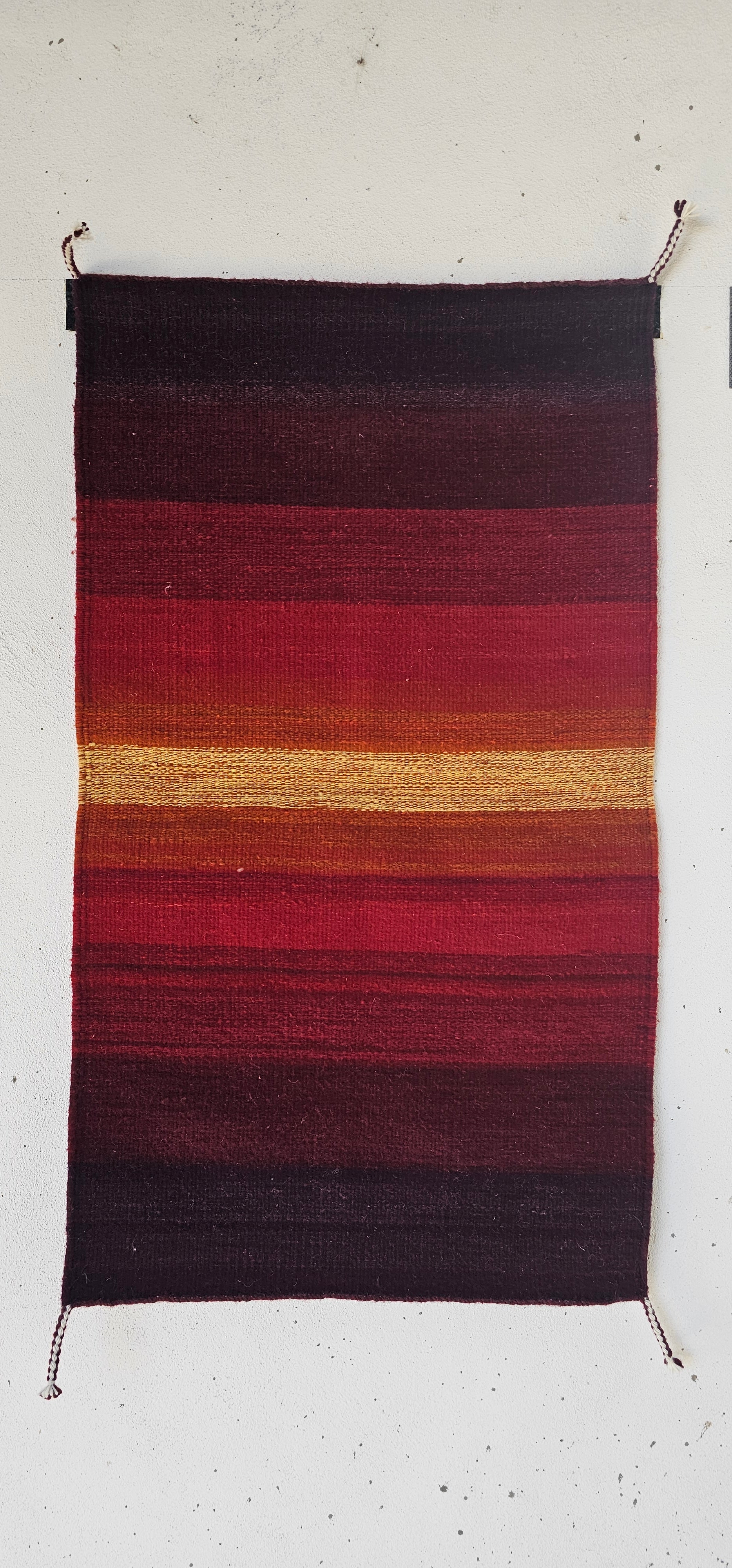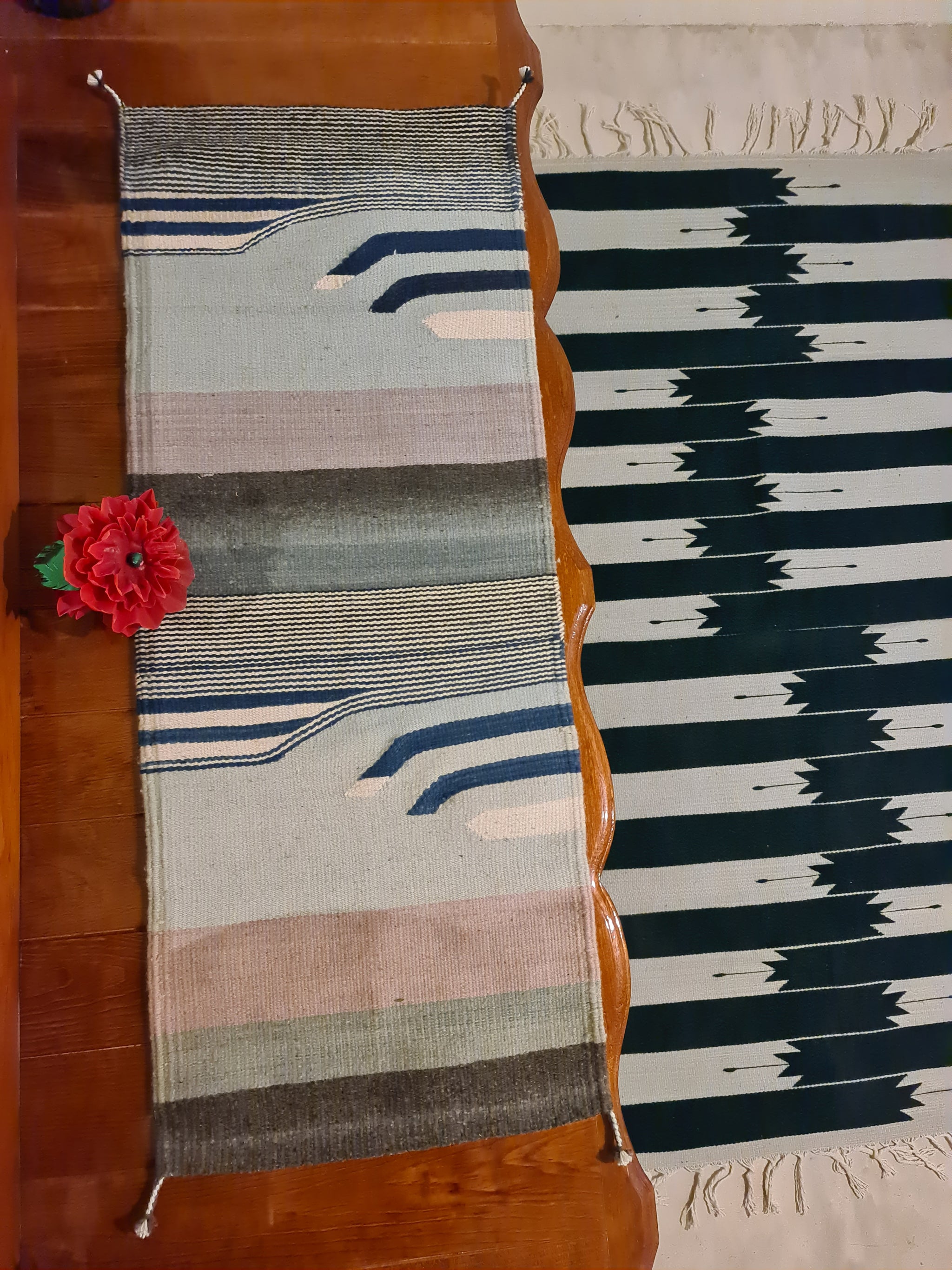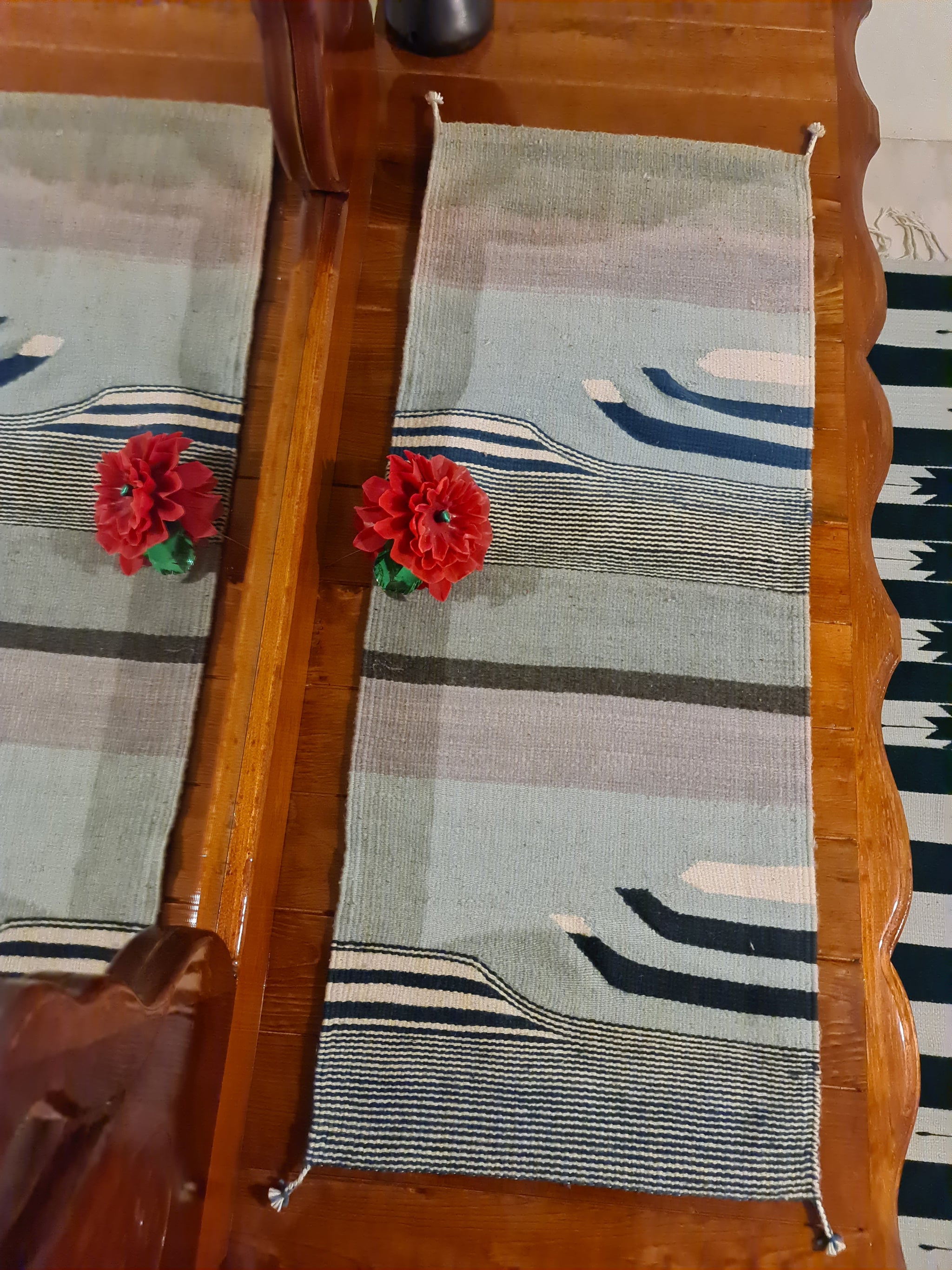Vive urbano: urban living
$ 10,000.00
Vive urbano: urban living
Size: 66x101cm, 26x40 in
Master weaver: Justino Martínez
Price at check out shows in Mexican pesos.
Materials and methods: yute fiber hand dyed with xiuhqulitl (indigofera sufroticosa). Handwoven on a Zapotec style loom of the 16th century adapted from European styles. Woven using a 7 threads per inch reed and a wool blend warp.
Desing, patterns and symbols.
This is a contemporary geometric design with 3D effects and is inpired in the grid blocks of our village, a legacy of Spanish town and city planners that brought their linear way of thinking into our lives along with the many urban problems we have. Montel Albán was the very first cuty built on this continent: it was built on top of a mountain, it collected rain water and channeled it to the surrounding homes and terraces on the hill top, that after being chanted and blessed with music and dance, it had "weed" (medicinal gardens) and a network of tunnels from ancient cave systems that connected it to Mitla (40km appart), the layout of the city reflects the surrounding mountain ranges and valleys. In the ancestral way, the tonal way of perception is the logic and language that allows us to see the patterns of nature and use abstraction to understant the big patterns and cycles of the cosmos. This way of thinking allowed our ancestors to develop one of the most precise calendar systems of ancient civilizations, it took modern astronomers the use of computers and decades of science to arrive to the same precision; the ancient Anawak calendar has a 0.019 slipts of a second of error in its accounting of time, and they were measuring long counts such as the 26,000 year cycle that gives rise to the precesion of the equinox. Not only that, but using a 20 base numerical system and exponentials, they recorded dates thare are 40 cuadrillion years old to gives a precise date to their day of creation, that is hundreds of magnitudes bigger than our current estimate of 13.7 billion years ago.
Share:
Related Items
Punta Cometa: fire tending
$ 4,600.00
60x100cm; 2x3ft Materials ans methods: criollo sheep wool hand dyed with colorfast aniline dyes using an exhaustive method. Handwoven on a Zapotec style loom of the 16th century adapted from European...
River Spirit
$ 3,110.00
Size: 40x100cm; 16in x 3.2ft Weaver: Zenaida Lopez from San Miguel del Valle Materials and Methods: Criollo sheep wool hand dyed by Leonor Lazo and Samuel Bautista using xiuhquilitl (indigo)...
Yaag Chei: tree of life
$ 5,500.00
Size: 60x100cm; 2x3ft Master Weaver: Samuel Bautista Lazo Materials and methods: criollo sheep wool spun in the mills of the Batalla family in Tianguistengo. Hand dyed yarns by Leonor Lazo using...





























